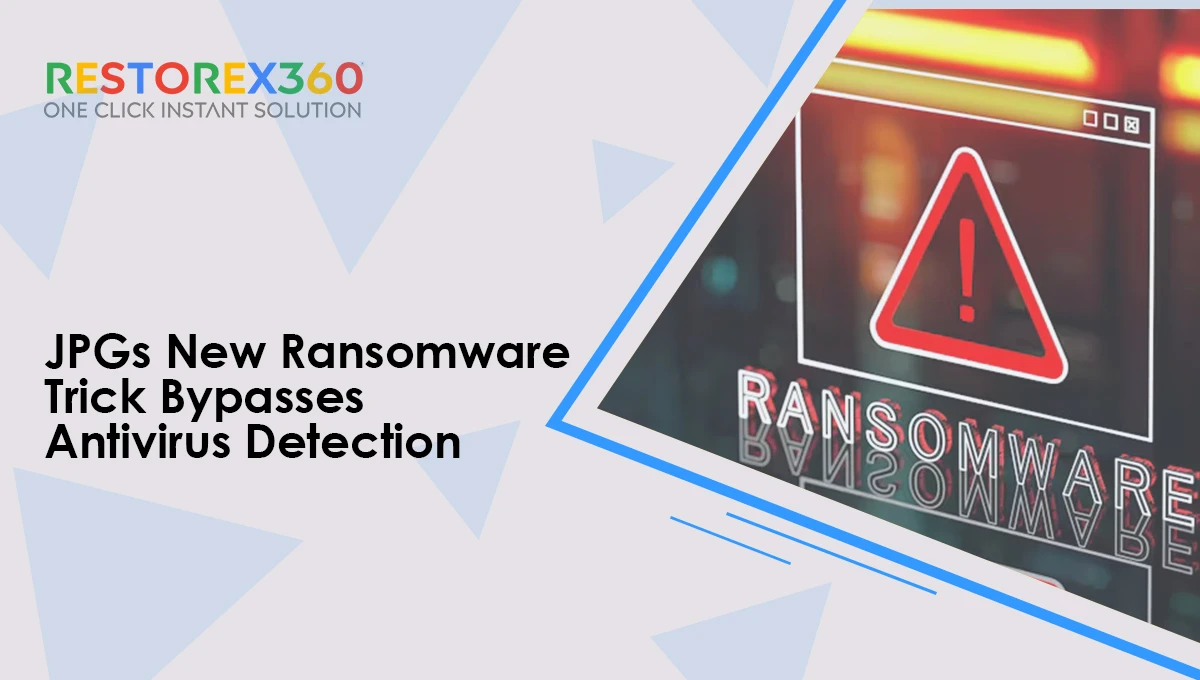

Cybersecurity researchers have uncovered a chilling new ransomware tactic where hackers use standard JPEG image files to deliver fully undetectable (FUD) ransomware payloads. This stealthy technique bypasses most traditional antivirus tools and signature-based malware defenses, highlighting a dangerous shift in how cybercriminals execute attacks.
The exploit was recently disclosed by cybersecurity researchers tracking sophisticated ransomware campaigns. It involves hiding malicious code within innocuous-looking image files that most users trust and often open without hesitation.
The new method is a multi-stage attack that weaponizes common file formats—specifically, JPG images and decoy documents—to bypass detection and deploy ransomware silently.
Stage 1: Image Loads the Stager
The infected JPEG contains embedded code that activates a “stager” script upon opening. This hidden loader does not trigger alerts in antivirus software, allowing it to operate undetected.
Stage 2: Remote Server Communication
The stager then contacts a remote Command and Control (C2) server to download the actual ransomware executable, using encrypted traffic to mask the transfer.
Stage 3: Ransomware Execution and File Encryption
Once downloaded, the ransomware is executed on the victim’s machine, locking files and demanding payment in cryptocurrency to restore access.
File Pairing Technique for Evasion
The malicious JPEG is typically sent alongside a decoy file (such as a PDF or Word document), with the ransomware payload split between the two. This dual-file approach prevents antivirus tools from correlating the files as part of a coordinated attack, allowing both to pass through email filters unchallenged.
Cybersecurity professionals are raising alarms over the effectiveness and simplicity of the method:
Zero Detection Rate: Over 90% of antivirus engines currently fail to detect the attack due to its obfuscation and encryption techniques.
Social Engineering Advantage: Victims inherently trust JPEG and document files, making them more likely to open them without suspicion.
Minimal Setup for Maximum Impact: Attackers only need to distribute two files to launch a full-scale ransomware attack.
A pseudonymous researcher involved in the discovery, described the exploit as a “0-day-grade technique with 60% completion,” suggesting more advanced variants are likely in development.
The FBI’s Cyber Division has issued a security bulletin urging businesses and individuals to update their cyber hygiene practices in light of this threat.
To mitigate risks from JPEG-based ransomware attacks, cybersecurity experts recommend the following measures:
1. Enable File Extensions
Ensure systems show full file extensions (e.g., “photo.jpg.exe”) to avoid being fooled by disguised executables.
2. Use Behaviour – Based Detection
Deploy endpoint protection platforms like CrowdStrike Falcon, Huntress, or SentinelOne that analyze behavioral anomalies rather than rely solely on known malware signatures.
3. Isolate Suspicious Attachments
Open email attachments in a sandboxed environment to contain potential threats before they reach critical systems.
4. Backup Regularly
Maintain offline or cloud-based backups with versioning to recover encrypted data without paying ransoms.
5. Employee Training
Educate staff to be wary of unexpected attachments, even from known contacts. Phishing awareness remains a crucial line of defense.
This JPEG-based ransomware attack represents a broader trend in cybercrime: attackers increasingly exploit familiar, trusted file types to deliver devastating payloads. With global ransomware damages projected to exceed $300 billion(approximately ₹25 lakh crore) in 2025, adopting proactive, layered security strategies is no longer optional—it is critical for survival in a hostile digital environment.
Yes, RestoreX360 can remove JPG’s ransomware virus from windows PC within couple of seconds.
RestoreX360 is a comprehensive Windows repair and optimization tool designed to address a wide range of system issues, including virus infections, boot failures, and performance problems. Here’s an overview of its capabilities:
RestoreX360 is a Windows utility that allows users to restore their system to a previous state using snapshot technology. It operates independently of the Windows operating system, enabling it to function even when Windows fails to boot. This makes it particularly useful for recovering from various system errors and malware attacks.
RestoreX360 employs several key features to address system issues:
 Important Considerations
Important ConsiderationsWhile RestoreX360 offers powerful recovery features, it’s essential to note that it should not be used as a substitute for regular antivirus software. It is most effective when used in conjunction with other security measures to ensure comprehensive protection.
 Summary
SummaryRestoreX360 is a valuable tool for users looking to quickly recover from system failures, including those caused by viruses or malware. Its snapshot-based recovery system allows for rapid restoration, often within seconds, making it a convenient option for troubleshooting and system repair.
